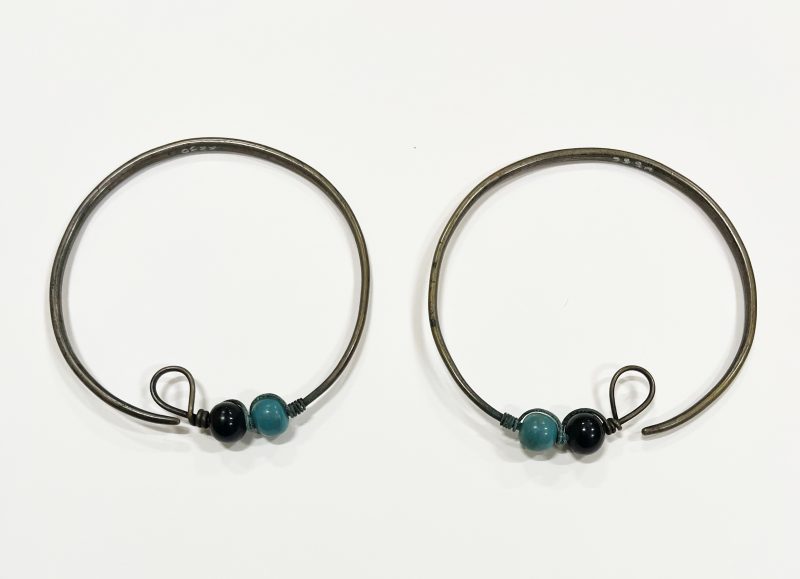Exhibition
2F Museum Facilities
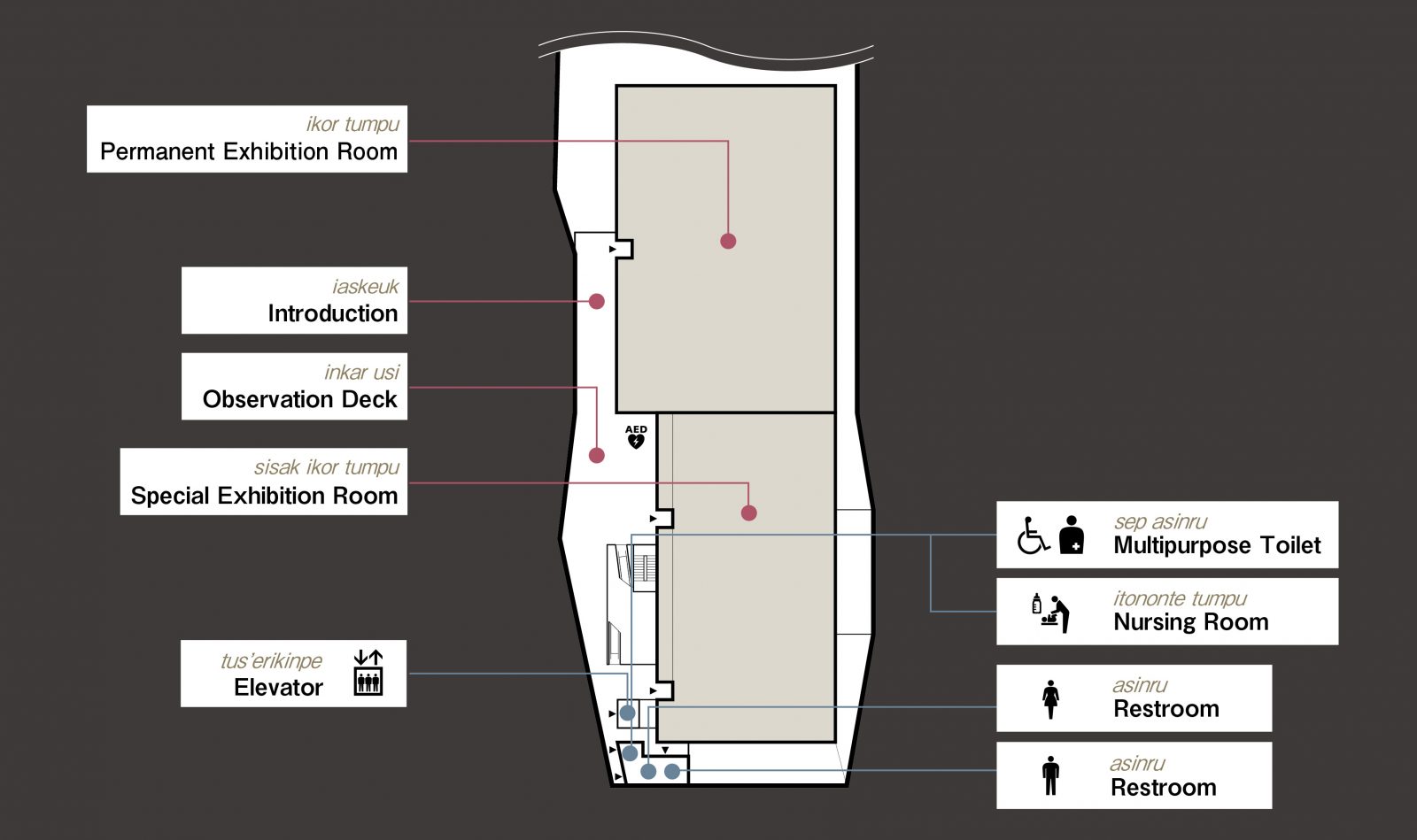
sisak ikor tumpu
Special Exhibition Room (2F)
8th Seasonal Exhibition “uymamrepunka: Santan Trade and Ezonishiki”
- Release Date:
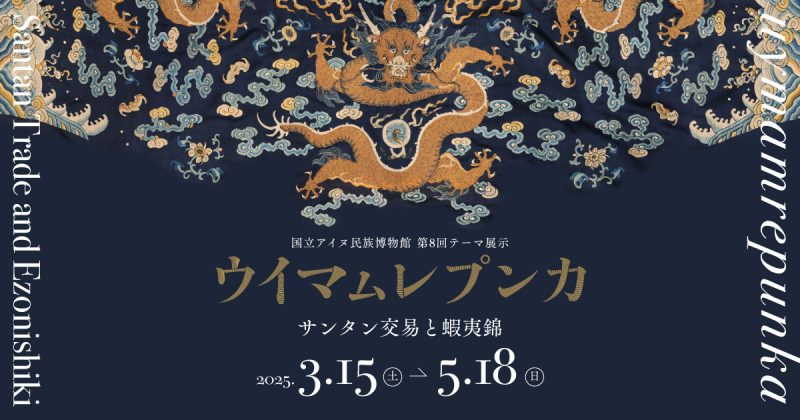
About this Exhibition
We are delighted to present the National Ainu Museum’s 8th Seasonal Exhibition, “uymamrepunka: Santan Trade and Ezonishiki.”
This exhibition showcases artifacts that once traveled from China through the Amur River Basin and Sakhalin, ultimately reaching Japan.
Until approximately 200 years ago, the Ainu hunted sables and foxes, transporting their pelts via sleds and boats to the mainland. They traded these pelts with Santan merchants and Chinese traders in exchange for goods such as Ezonishiki (silk ceremonial garments), glass beads, and coins. Some Sakhalin Ainu chiefs even held official positions under the Qing Dynasty, the last imperial dynasty of China.
Ezonishiki became a prized trade item with the Wajin (ethnic Japanese) while glass beads were assembled into necklaces and treasured by Ainu women. The Wajin valued Ezonishiki, acquiring it from the Ainu for clothing as well as for use as Buddhist altar decorations, sword bags, and wallets. However, the Ainu were sometimes compelled by the Wajin to obtain Ezonishiki, which placed a significant burden on them.
The Santan trade came to an end in the mid-19th century when Russia expanded its influence in the region, establishing borders between Russia, China, and Japan.
We invite you to explore how the Ainu and Wajin made use of various items introduced from China, including silk textiles called Ezonishiki and glass beads.
Information
8th Seasonal Exhibition “uymamrepunka: Santan Trade and Ezonishiki”
Date
March 15, 2025 – May 18, 2025
Closed on
Mondays (or the following weekday if it is a holiday); May 7, 2025
※The museum will open on April 28, May 5 and May 6, 2025.
Opening hours
| March 15 – 30 | 9:00am to 5:00pm |
| April 1 – 25, May 8 – 18 | 9:00am to 6:00pm |
| April 26 – May 6 | 9:00am to 8:00pm |
Venue
National Ainu Museum 2F Special Exhibition Room
Organized by
National Ainu Museum
Cooperation by
Hakodate City Museum
Collaboration with
Ainu Association of Hokkaido, The Hokkaido Shimbun Press
Admission
- Entry to the museum is included with admission to Upopoy National Ainu Museum and Park.
- For more information see: Upopoy National Ainu Museum and Park admission fees (Upopoy website)
Contents
Chapter 1: What is the “Santan trade”?
Chapter 2: Boats and Sleds that Carried Ezonishiki
Chapter 3: Various Ezonishiki and Santan Garments
Chapter 4: Glass Beads and Coins
Chapter 1: What is the “Santan trade”?
The “Santan trade” refers to the trading activities conducted by the ancestors of indigenous groups such as the Ulchi, Nivkh, and Nanai, who lived in the lower Amur River Basin from the 17th to 19th centuries. They were called santa by the Ainu people, from which the term “Santan trade” was derived.
They often visited Sakhalin and sold Chinese silk fabrics, glass beads, eagle and hawk tail feathers, and other goods to the Ainu and Wajin (ethnic Japanese). In exchange, they acquired sable and fox pelts, as well as Japanese iron products, before returning home. This trade effectively served as an intermediary trade between China and Japan.

Documents issued to chiefs of Sakhalin Ainu by the Qing Dynasty
Chapter 2: Boats and Sleds that Carried Ezonishiki
Boats and sleds were essential modes of transport for indigenous people. Sleds were pulled by dogs and reindeer, and boats were sometimes guided by dogs running along the riverbanks. The strait between Sakhalin and the mainland was crossed by boat in summer and on foot or by sled over the frozen ice in winter. When the Ainu ventured out to sea for trade, they used a boat called itaomacip. The boat had a dugout base, reinforced with wooden planks to elevate the sides and increase its capacity.
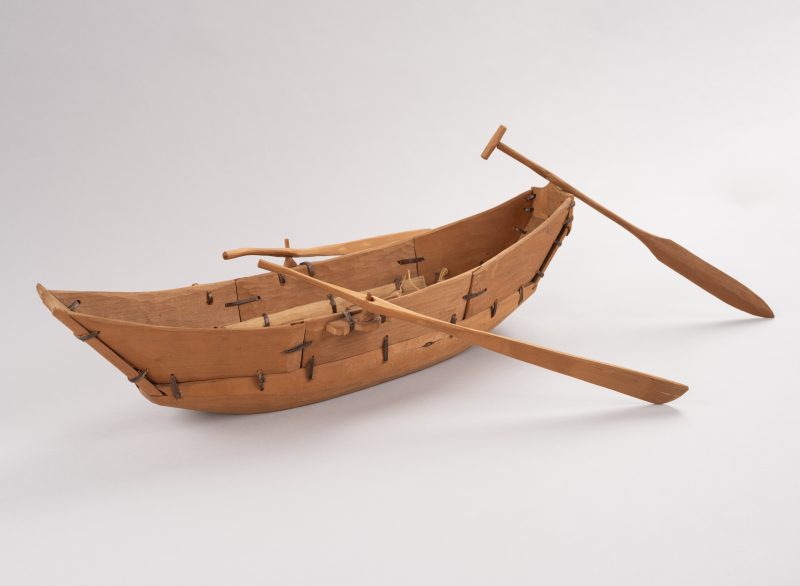
Chapter 3: Various Ezonishiki and Santan Garments
Ezonishiki are vividly colored silk textiles woven with gold and silver threads, featuring motifs such as dragons, peonies, clouds, and waves. Many Ezonishiki introduced through the Santan trade eventually passed out of Ainu society through exchanges with the Wajin (ethnic Japanese). Notably, they were demanded as tribute items in ceremonial exchanges with the Matsumae clan. The term “Santan garments” is another name for Ezonishiki, referring to the clothing brought from the Santan region.
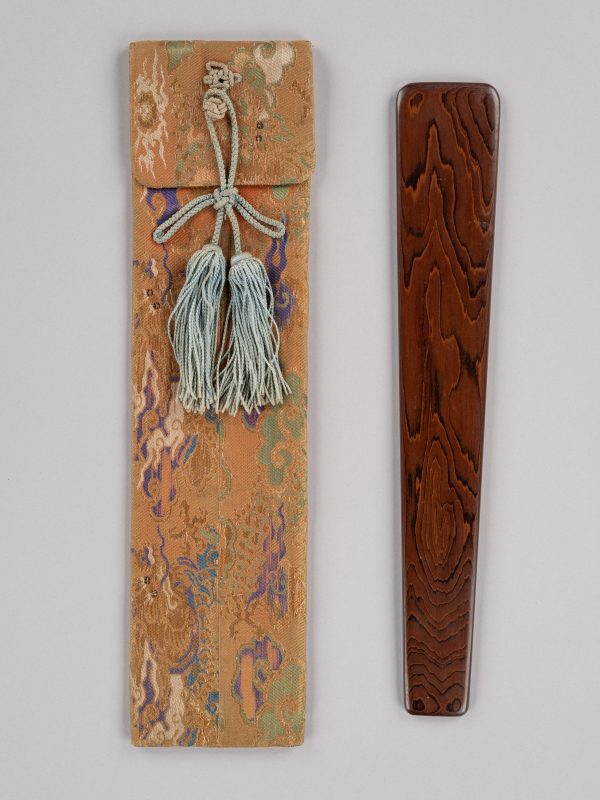
Chapter 4: Glass Beads and Coins
Among the goods brought through the Santan trade, glass beads, particularly blue ones, held significant importance. Excavations suggest they were already in use during the 13th and 14th centuries.
Unlike Ezonishiki, which eventually fell out of use in Ainu society, glass beads were widely used in women’s ceremonial necklaces and other accessories, becoming indispensable and highly cherished. Coins were also used decoratively, rather than as currency, in necklaces and other adornments.
